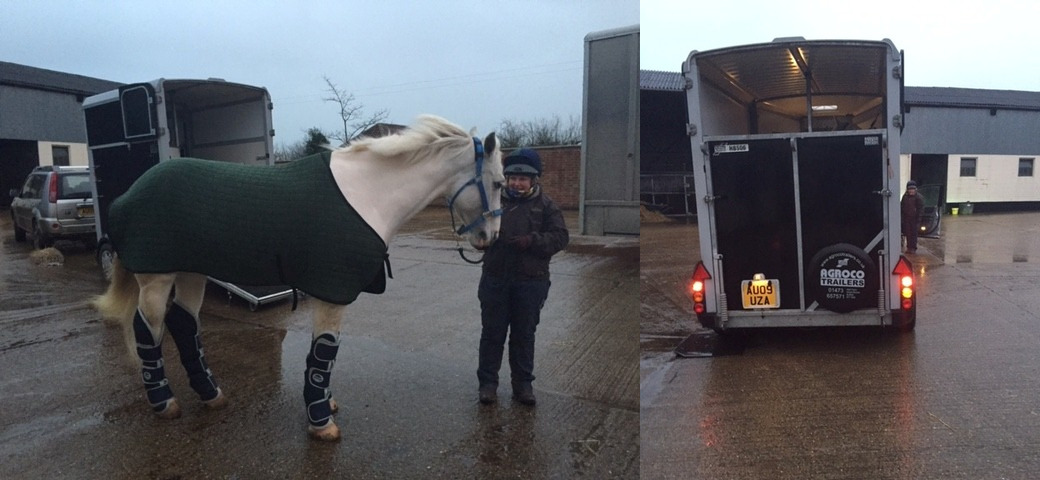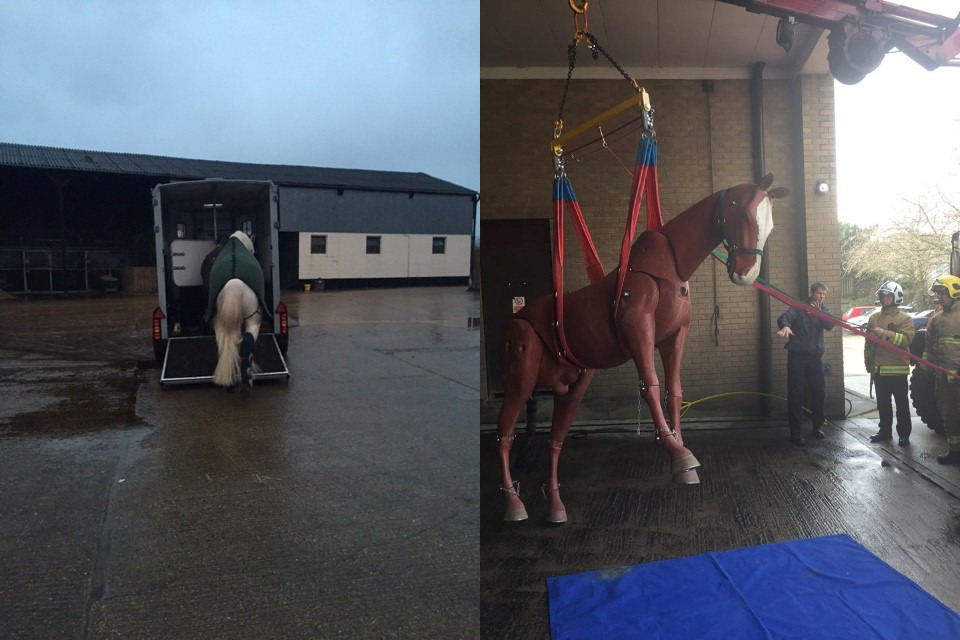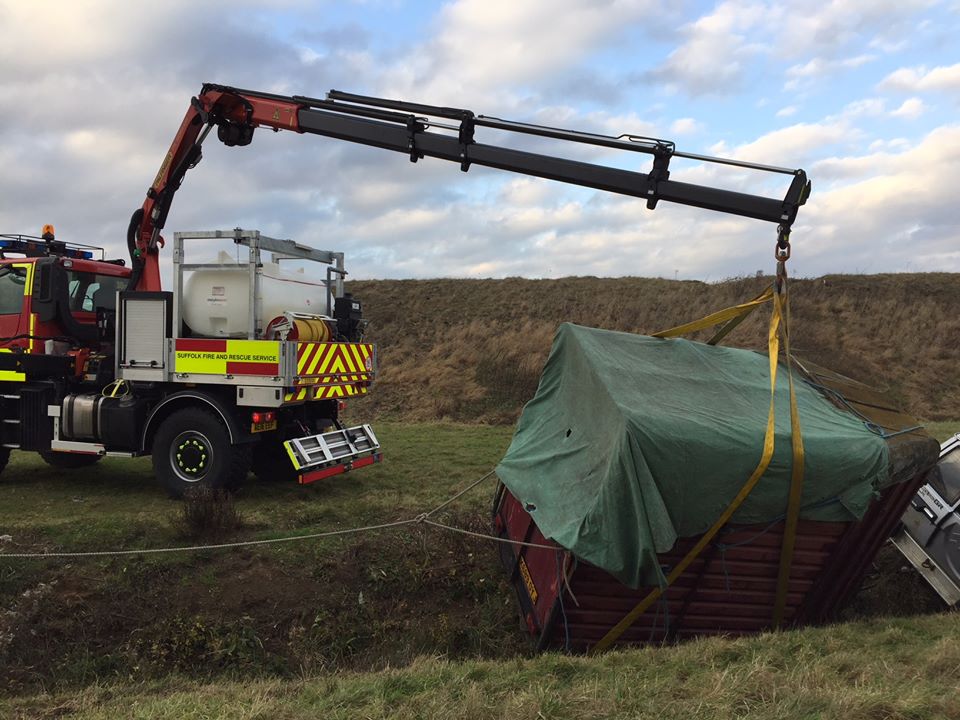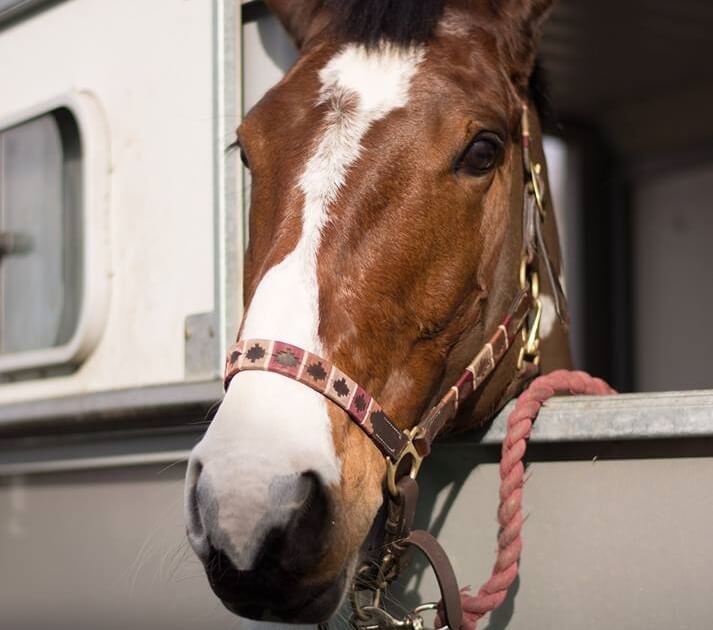If you move your horse around, even occasionally, it is important to be prepared for any eventuality. We’ve tried to compose a guide of what we feel is important to have when travelling. It is also important to ensure you are towing/driving legally, and therefore necessary to know the weight capacity of your vehicles, and how much you, your horse and all your kit weighs too! Lots of extra information can be found on the BHS website, and also VOSA.
Horse
Ensure your horse is protected and appropriately attired:
- Travel boots or stable bandages (make sure he is comfortable wearing them at home before you expect him to be able to travel in them) and over-reach boots (particularly if you are unsure as to how well they’ll travel)
- Tail bandage (particularly important if the horse fills the partitioned area, as may use his bottom as ballast.
- Appropriate weight rug (remember horses get hot travelling, as they can find it stressful or exciting, and also standing during motion is the equivalent amount of effort to walk for the same amount of time)
- A safe well fitting head collar- leather may be safer, as it will snap when pulled with great force rather than damaging the horse’s face
- Quick release tie or lead rope attached to quick release clasp (such as an equi-ping)
- Personally, I always also travel with a simple bridle and lunge line too- this serves two purposes- Molly can some times be unreliable to load, and if I did have to unload on the side of a road, I would have better control of her if she were to spook. If I was travelling two horses, I would pack two of each.
- Additionally if you travel a tall horse or a horse that may rear, it would be wise to use a poll guard
- YOUR HORSE’S PASSPORT- Legally you are required to carry it with you; if you’re stopped and don’t have it, you may be fined. And if you break-down; the horse recovery company may refuse to take your horse if you do not have a passport (or at least a photocopy) with you.
- Spare head collar and lead rope, An extra rug, or thicker rug for your journey home!
First Aid Kit
- Thermometer
- Melonin pads
- Bandages (Softbann, Co-form, Vet-rapp)
- Gamgee
- Black tape
- Scissors
- Vetalintex
- Irriclens
- Activate ice-pack or cooling gels
- Cotton wool
- Electrolytes
- Hoof pick
We can provide a first-aid kit for travelling if required, and it comes in a handy bag! Just call the office, or speak to us on a visit and we can arrange.
Vehicle
- Pen Knife
- Baler Twine
- Extra Hay
- Bucket
- Water container (Full)
- Spare Head Collar and lead rein
- Towel
- WD-40
- Torch (with batteries) and extra lights
- Proper spare tyre(s) for both car and trailer. Skinny tyres and run-flats are far from ideal, as you are unlikely to be able to stop at a garage with your horse on board, and you could easily be travelling beyond 50 miles!
- Safety triangles x 3 (in case you break down) So that other road users are aware of you and your precious cargo
- Maps- Very useful if you come across diversions, or weight/Height limits.
Fill your car up with fuel before embarking on your journey, as stopping in service stations can be tricky, especially in a larger vehicle. Check your car/Box/Trailer tyre pressures, and ensure that there is adequate tread on the tyres. Check your Oil and screen-wash levels are topped-up.
Ensure that your vehicle is road worthy, and up to towing your horse. Towing places great strain on your vehicle, particularly its clutch, and therefore be aware that this may need replacing sooner than in a non-towing car!
Your trailer is just as important as your car. Check the floor before loading your horse up, Lift the matts, aluminium floor should have no rust, and wooden floors should be dry and mould free.
When you hitch up, check your lights, including your brakes. Even if your trailer is brand new, there may be a dodgy connection somewhere. Check that your mud guards are secure, and that nothing is trapped behind them. Once your horse is loaded, double check all doors are secure. YOUR NUMBER PLATES MUST MATCH
It is preferable to have some airflow within the box, this not only cools the horse, but also reduces the risks of spores/bacteria being inhaled, causing respiratory infections or shipping fever (pleuropneumonia)

Tottie ready to go! (L). Remember to check your lights, including brakes (R)
Yourself
- High visiblilty Jacket/tabard for everyone travelling
- Human first aid kit including: paracetamol, plasters, wound sanitisor
- Information including your vets telephone number (01728 685123),your car insurance details, break-down cover for your car, and horse recovery (otherwise your car may be recovered and your horse left)
- Mobile phone, and charger, with contact lists up-to-date.
- Money!
The Journey
Plan it before you leave! Check that you know there are no bridges or tunnels with weight/Height limits. Try and stick to larger straighter roads where you do not have to weave in and out of parked traffic. If possible avoid roads that you know are prone to stop-start traffic, as braking and accelerating are most difficult for a horse to stand too.
If you are travelling long distances, ensure that you plan suitable places to stop, and use them! Pull over and offer your horse water and a rest, as travelling is hard work!
Always give yourself extra time, and plan to arrive half an hour earlier than you need too.
It is also important to pay attention to the weather forecast, try and avoid travelling in any extreme weather- be sensible, and when the weather is bad (or very hot) only make important necessary journeys. If it is windy or wet, consider how your horse may feel, it may be wise to shut some of the top doors which wouldn’t usually be shut, however again, remember airflow!
Have a test run before you expect your horse to travel a long distance his first time travelling with you. You may discover that he is very wobbly (like Molly) and would benefit from more space, so that they learn to hold themselves up rather than leaning. I temporarily overcome this problem in my trailer by pining and securing the partition across (as you would do for loading) before getting a full length breach bar!
Careful driving is a must, try to drive as smoothly as possible, with gentle acceleration and braking in good time. Commit to your driving, if you decide you are going to pull away, do not break suddenly. Successful trailer/lorry drivers read the road, and are looking well in advance for potential hazards, and anticipating changes such as traffic lights and zebra crossings.
When Things Go Wrong
Unfortunately there is always a risk to travelling your horse. It is important to think about what you would do if something were to go wrong. Hopefully if you carry the kit mentioned above, then you will be prepared for many eventualities, but there are some problems you cannot predict. Both vets at Deben Valley Equine Veterinary Clinic are animal rescue trained, to the same level as the specialist teams within the fire service which, fortunately in Suffolk, are all the full-time crews. This means that if there is an accident we are all prepared as best as possible to help you.
If you were to have an accident on the road, the most important thing to do is to stay calm and, as difficult as it may be, prioritise yourself. Do not unload you horse, unless there is a safe place to put him. Horses are prey animals and it is drilled into them to either fight or flight. Therefore when trapped in a tight gap or in pain they will not respond predictably or as they would when they are at home.

Tottie loading (L), and Brian the dummy horse! (R)
Falling Over in Lorry/Trailer
If you think your horse has fallen over whilst travelling, there are a number of safe sensible steps you can follow, to keep him as safe as possible.
Remain calm, drive slowly and steadily (with your hazards on if necessary) until you can find somewhere safe to stop. Ideally this would be an enclosed area, such as a car park, but a lay-by would be sufficient. Make sure you know where you are, and take note of any signs or distinguishing features which may help to find you quickly.
Once pulled over, take a couple of big deep, breaths, then call your vet (01728 685 123) They will be able to talk you through what to do, and if necessary will be able to head out to help.
Try and see the position of the horse without entering the trailer or cab with him. Use windows etc. (If he is trapped and scared an opening door may seem like an escape route and get him into further trouble) If you can assess his breathing, where his limbs are, and how settled he seems, note if you can see obvious cuts or blood on the floor.
Ideally at this point you would wait for help. DO NOT UNLOAD YOUR HORSE. Remember horses are fight of flight animals, and if they see space when they are scared they are likely to run, potentially into more danger.
If you do enter the cab ensure you are wearing a hat, if the horse is on the floor only approach him from his spine side, avoiding both his front and back legs. In these situations it is vitally important that you do not put yourself in danger, and try not to encourage the horse to move unless you are certain he can get up safely and is without serious injury. Feeding hay is very calming for horses and is often the best way of keeping him still.
Our Contact Details
Deben Valley Equine Veterinary Clinic,
High House Farm,
Birds Lane,
Framsden,
Suffolk,
IP14 6HR
01728 685123

Other Useful Links
http://www.towinghorsetrailers.co.uk
http://nasdonline.org/1043/d000842/horse-trailer-maintenance-and-trailering-safety.html (American based advice, so some does not apply)
